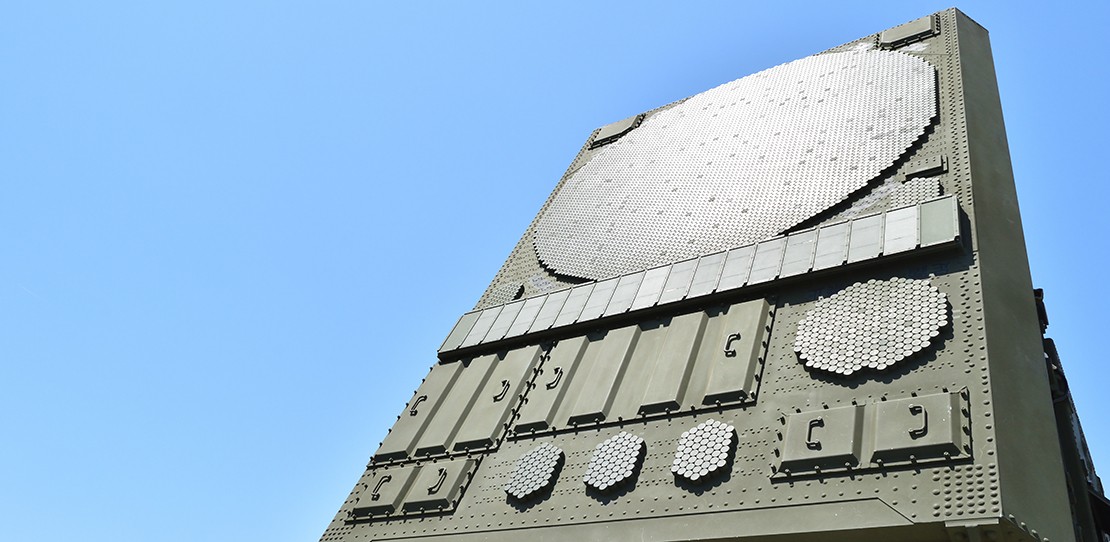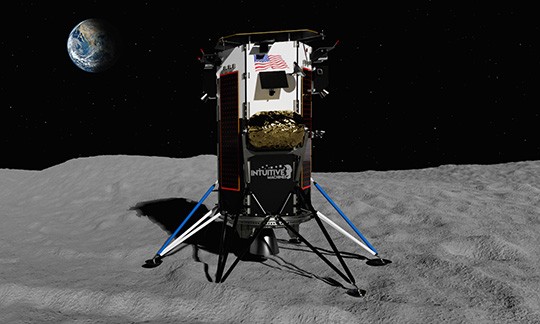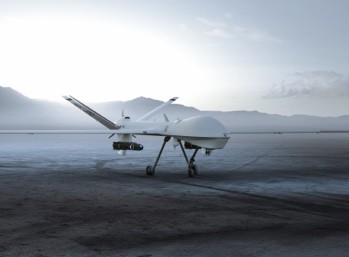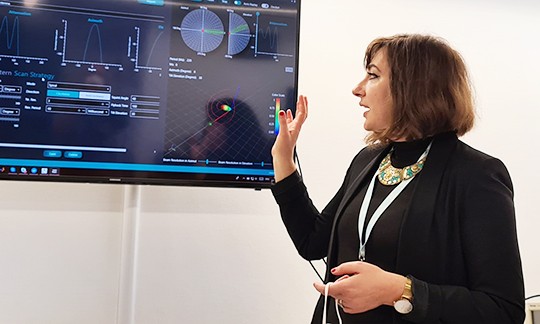
Radar Engineers Adapt to Hypersonic Challenges
BUSINESS INSIGHT
AEROSPACE AND DEFENSE | 7 MINUTE READ
Advancements in hypersonic technology pose unique challenges for radar developers as they make adjustments to track ongoing threats.
Hypersonic vehicle technologies, which can include anything from airplanes and spacecrafts to missiles, are so fast that their speed can break apart surrounding air molecules. They’re built to be stealthy and hard to detect with radar. They’re considerably more agile than their predecessors and unpredictable, thus requiring radar developers to adapt and strive for systems that provide rapid reactions and accurate responses.
The good news is that many talented engineers are applying innovative solutions to help make the world a safer place. The obstacles radar developers face require collaboration across the board and strategic methods of adapting to evolving advancements. Here at NI, we’re equipped to help these teams rapidly deploy enhanced capabilities and improve mission readiness.
Tracking Hypersonic Vehicles
Prior to the evolution of hypersonic weapons systems, a key use of radar systems was for tracking long-range ballistic missiles. The mechanics of their flights resemble the flight trajectory of a space launch, which is quite predictable. In the past, this delivery method was daunting to defend against as missiles were launched into space and approached an extremely high speed to devastating effect. Modern ballistic missile defense systems like Aegis took advantage of this predictability and countered the threat with high-performance intercepting missiles. To counter these countermeasures and as engine technology has evolved, many defense organizations are looking to hypersonic vehicles to deliver the same payloads.
Hypersonic weapons, unlike ballistic missiles, take unpredictable paths and can evade missile defense systems. To counter hypersonic technologies, radar engineers must build systems without coverage holes that can track such high-speed vehicles.

A modern technology threat offers an opportunity to engineer novel solutions, and testing will be especially important to the successful development and deployment of these kinds of systems.
Speed
When we talk about hypersonic technology, we’re talking about vehicles that can travel at speeds greater than five times the speed of sound (Mach 5). At that speed, you’re essentially traveling over a mile per second. As hypersonic technologies have evolved, speeds for these vehicles have gone from relatively slow to supersonic (up to Mach 5) to hypersonic, which can reach speeds as high as Mach 10. These vehicles can cover vast distances in minutes, so the need for more sophisticated missile defense systems is upon us.
One key challenge facing radar developers is that an S-Band radar detecting a hypersonic threat moving at Mach 10 will see a Doppler shift of approximately 35 MHz. Narrowband instrumentation will not be sufficient for measuring this change in frequency, nor for emulating targets at hypersonic speeds in a hardware-in-the-loop test system. Test strategies must then be adapted to accurately mimic hypersonic threats. Relying on technologies like wideband, modular multichannel field programmable gate array (FPGA)-based instrumentation is going to be critical in emulating a realistic high-Doppler shift and getting real-time responses with a low-latency FPGA. This technology is critical in prototyping and testing these types of systems.
Power
The dynamic nature of hypersonics means that detection radars must be distributed across different platforms on land and sea. Remotely located and mobile radar systems will need considerable power to operate, for example, from a giant military truck running a generator. To get the most out of the power available, we need Gallium nitride (GaN) amplification technology for the radio frequency (RF) transmitters.
Utilizing GaN means radars can increase transmit power and extend detection range required to detect hypersonic missiles, without a significant increase in supplied power. This amplifier technology is still relatively young and is expected to see considerable power efficiency improvements over the upcoming years. The GaN supply chain currently has low volume and high prices, making it cost-prohibitive to deploy into a large channel count distributed radar configuration. To lead to higher volume production and lower prices, this technology needs more adoption across industries.
For test engineers, using GaN is an exercise in extreme precision. It requires more capable test equipment than previous power amplifier technology. Since GaN has lower leakage than other power amplifiers, measurement tools must be meticulous. High bandwidth and great sensitivity are essential. There is an increased need for testing inspection for safety-critical reliability requirements.
Stealth
Hypersonic vehicle technologies are hard to detect via radar as they have a low radar cross section (RCS), which measures how detectable an object is by radar. There are a few approaches radar developers can take to overcome this challenge.
The first is to further incorporate GaN technology to boost radar transmit power to improve the probability of detection. To detect an object that has low RCS like one of these stealthy objects, you need a higher power, since these hypersonics are designed with sharp edges in such a way that it will reflect very little of the power back to the radar trying to track it. In this context, GaN can act as a more efficient technology that will get more out of the semiconductor for those applications. Another route to overcoming stealth is implementing improved algorithms for detecting targets and distinguishing those targets from other objects. Radar developers will then need to experiment with new waveforms and system architectures to rapidly adapt as threats evolve. For example, that might look like going from mechanically steered radar to prototyping a phased array, or an electronically scanned array (ESA), radar. Ultimately, rapidly prototyping new algorithms with software defined radios could allow researchers and systems engineers to deliver critical new capabilities faster.
Agility
Unlike traditional ballistic missile delivery systems, hypersonic vehicles can be considerably more agile and thus a challenge to track. Radars must employ ESA technology rather than relying on systems with mechanically steered, single-beam antennas, which adds a layer of complexity.

Testing ESAs presents several challenges due to the multichannel nature requiring precisely synchronized, phase coherent measurements. Although they offer unprecedented performance and wideband multifunctionality, radar developers are expected to quickly adapt and demonstrate new capabilities in the real world, placing a demand on reliable test solutions, especially when it comes to transitioning from simulation to testbed to fielded system.
While rapidly deploying advanced capabilities will not be a simple task, it’s crucial to be able to test systems in realistic scenarios to evaluate system-level performance. Supporting radar developers and engineers as they work toward spectrum superiority, NI's scalable RF solution for ESA test offers a solution to address the key challenges with testing modern RF components and modules built using GaN technology.
Cost
Since hypersonic vehicles can be extremely complex in their movement and speed, radars that can track them are very expensive. To get final system approval, defense teams often require a live fire open range test to assess the radar’s capabilities in addressing speed, stealth, and range. Launching a hypersonic vehicle against a radar in open range is—you guessed it—quite expensive. Not only that, but it also isn’t practical to do many iterations of this test.
Fortunately, innovations in radar testing are in a rapid path to development and deployment. These improvements work alongside the new technology in a cost-effective way. Setting up a simulated radar environment with real-world reactive, realistic signals would allow engineers to test more thoroughly with reduced costs. By applying the principles of digital transformation to radar design and test, engineers are able to create different virtual environments and conditions, and can increase the chance of success and limit the number of over-the-air tests. This not only saves on live fire test costs but ultimately helps produce more reliable radars.
Addressing Hypersonic Vehicle Challenges
Developments in hypersonic vehicle technologies are quickly evolving, and the ability to not only maintain performance but also adapt as threats evolve in a cost-effective way present major challenges. As with any rapidly developing technology, hypersonics provide an opportunity to Engineer Ambitiously™ while collaborating together to make the world a safer place.
We’re here to help your team find errors early in the design cycle, reduce costs, and increase your confidence in the mission-readiness of your systems. Partner with NI to design, test, and deploy the latest capabilities in radar and keep pace with rapid advancements in hypersonic technology and beyond.


